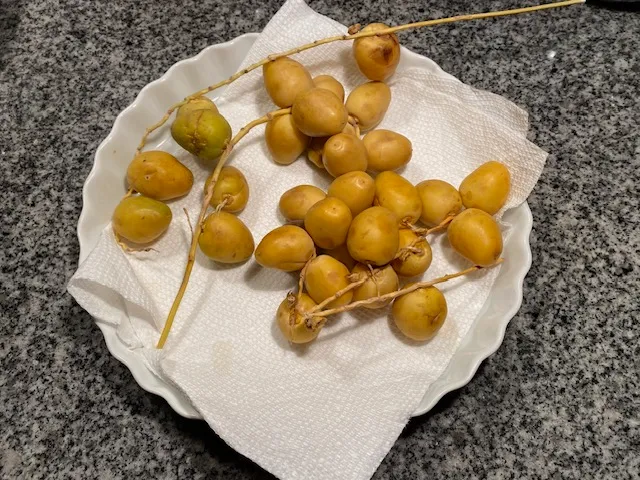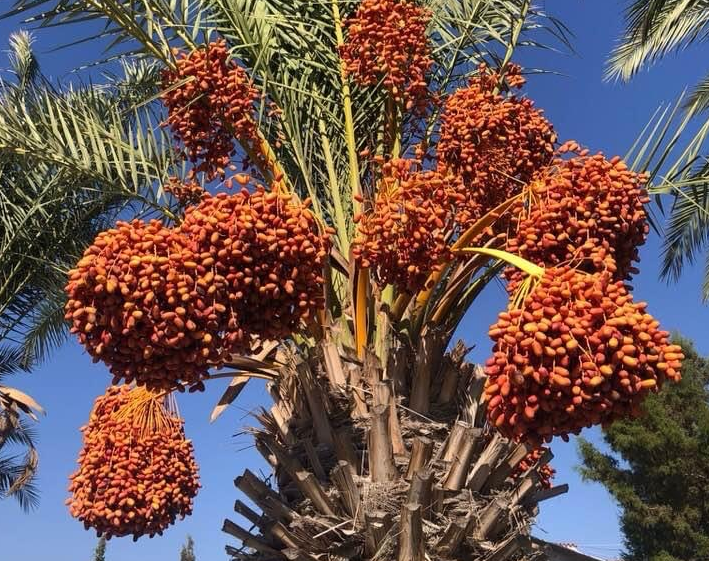
Throughout history, dried dates have been popular as a snack in the winter when fresh fruits were not available. Now, they are popular year-round and are used in healthy desserts and energy bars. Dried dates are delicious when pitted and stuffed with almonds, walnuts, or candied orange and lemon peels.
There are about 600 varieties of dates, with the large Medjool dates being the most popular. Medjools are known as the “king of dates” because of their soft skin. All the Medjool palms in the world have originated from one individual palm tree in Bou Denib, Morocco. Dates are imported mainly from the Middle East, where they have been a dietary staple for thousands of years, but they are now also grown in Arizona.
While growing on the trees, dates resemble olives at first but change color as they mature. Dates are harvested in the fall, and when ripe, they are soft and sticky with caramelized flavor and a hard, elongated pit inside. They have a long shelf life, but if the dates are hard, dry, and flaky, they are past their prime.
The palm trees are not just grown for date production; rather, the tree is fully utilized. The trunk furnishes timber, the feather-like leaves are used as a roofing material for making baskets, furniture, and packing material, the seeds feed livestock, and the stalks are used to make brooms. A sparkling nonalcoholic beverage is derived from the sap of the palm tree and served during the holidays or Ramadan. Fresh dates are cooked into syrup or distilled into alcohol or vinegar. The last bud on the branch is a delicacy added to salads. Palms have also been used in medicines and have a symbolic meaning in the Christian faith.

Freshly picked, yellow-colored dates need to ripen in order to be sweet and edible. To speed up ripening at home, place unripened dates in a sunny location. They should turn brown and soft and be ready to eat in a few days.

Date palm trees can grow to be 75 feet tall, and they are pollinated by wind. One bunch of dates can have up to 1,000 dates and weigh 18 pounds. Palms reach maturity at 10 to 15 years and can yield 90 to 180 pounds per harvest. Palms can live as long as 150 years.
Magda Born
mborn@kckpl.org
Community Services Librarian
Kansas City, Kansas Public Library
625 Minnesota Ave.
Kansas City, KS 66101
913-295-8250 ext 1103
Resources:

The new book of Middle Eastern food by Claudia Roden
Format: Book
Call Number: 641.5956 RODEN

Ripe figs: recipes and stories from Turkey, Greece, and Cyprus by Yasmin Khan
Format: Book
Call Number: 641.5956 KHAN

Macedonia: the cookbook: recipes & stories from the Balkans by Katerina Nitsou
Format: Book
Call Number: 641.5949 NITSOU